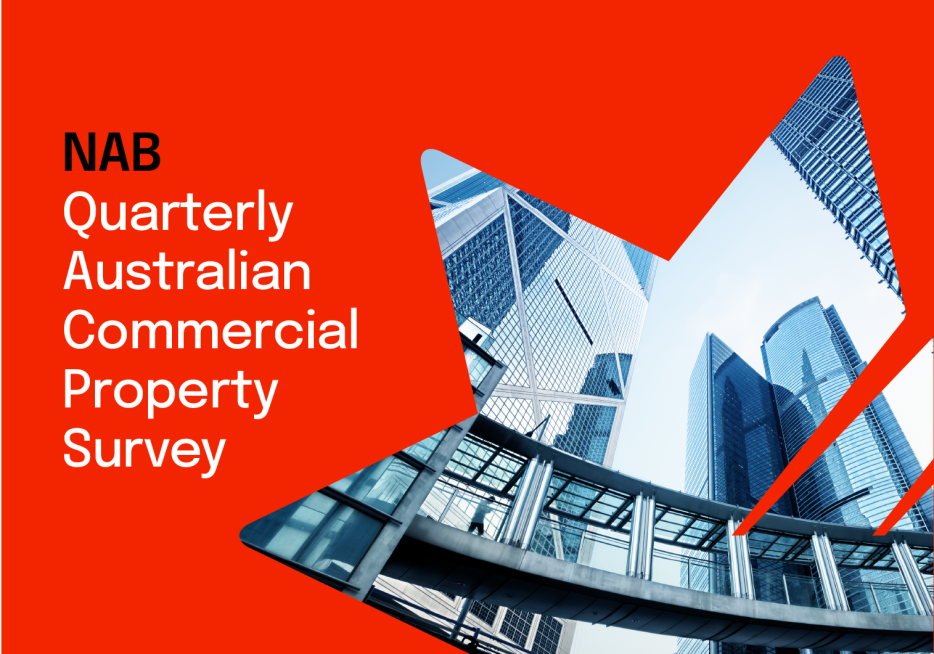Sentiment rises further in Q4, with NAB’s Commercial Property Index reaching a 2-year high (but still negative overall). Improvement driven mainly by office and retail, although both segments still under-performing. Sentiment edged up in all states bar Qld and SA/NT. NSW most optimistic state and set to remain so in next 1-2 years, but biggest improvement to occur in Qld. Industrial property to out-perform in next 1-2 years, with recovery in retail gathering steam. Capital and rental expectations generally lower in all markets (bar retail), but confidence among developers improving as financing conditions ease. Stock availability now the biggest challenge for property firms with concerns over financial/economic volatility and interest rates also up sharply.
- NAB’s Commercial Property Index rose to -7 points in Q4 (-13 in Q3) – a result largely attributed to improved sentiment in office and retail markets and consistent with a pick in business confidence also seen in NAB’s latest Quarterly Business Survey. Forward expectations largely unchanged over next year but somewhat softer in 2 years time as outlook for capital and rental growth also weakens. Overall sentiment now strongest for industrial over the next 1-2 years, replacing CBD hotels.
- Sentiment edged up in all states except SA/NT and Queensland in Q4. Sentiment improved most in NSW (also the only state to return a positive index reading). Property professionals in most states more confident about short-term outlook, but expectations in 2 years time scaled back in Victoria, NSW and Queensland. NSW remains most optimistic state for commercial property over next 1-2 years, but biggest improvement expected in Queensland.
- Capital values fell in all markets in Q4 except CBD hotels, but pace of decline slowed in office and industrial sectors. Outlook for capital values mixed with expectations scaled back for industrial (1.2% and 2.3%) and CBD hotels (1.8% and 2.3%) in next 1-2 years. Expectations for office values stronger over next year (1.2%) but weaker in 2 years time (1.8%). Capital value expectations for retail property also stronger over next 12 months (0.6%) but unchanged in 2 years time (1.3%).
- Gross rents fell in Q4, but at slower rate in all markets except industrial. Expectations for rental growth over next year lowered for industrial (0.7%), but higher for retail (-0.1%) and office (-0.4%). Rental expectations in 2 years time also scaled back for industrial (1.4%) and office (0.3%), but raised for retail (0.5%). Importance of leasing incentives in office markets continued growing in Q4 and highest in commercial property space by some margin. Property professionals also identified higher incentives in industrial market in Q4, but said incentives less important in retail property markets.
- The office market remains “somewhat over-supplied”, with excess supply seen as being most abundant in Victoria (“quite over-supplied”). Supply conditions in CBD hotel sector have loosened with market conditions now assessed as “neutral” after a long period of under-supply. “Neutral” supply conditions also prevailing in industrial and retail markets.
- Vacancy rates in the office market climbing as available space rises. National office vacancy rate reached 9% in Q4, with vacancy approaching 12% in Queensland. Office vacancy expected to fall moderately over the outlook period, but remain at relatively elevated levels. Industrial and retail vacancies relatively stable in Q4, but expected to trend down in next 1-2 years.
- Significant increase in number of developers planning to increase works in next 1-6 months, with most seeking to develop residential property (especially in NSW). Majority of developers seeking to develop land-banked stock but increasing number also looking for new acquisition opportunities, suggesting confidence among developers continued to improve in Q4.
- The ability of property developers to access debt and equity funding continued to improve in Q4, while the average pre-commitment requirement to meet external funding requirements for new developments has fallen to its lowest level since Q1’10. Stock availability has replaced consumer confidence (down significantly) as the main challenge facing property businesses in the next year. Concerns around financial/economic volatility also much higher and in nearly all states.
For further analysis download the summary or full report.


